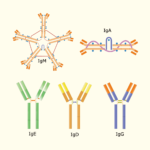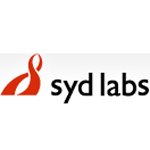Antibody Humanization Service
Antibody humanization service using empirical and rational approaches. Humanized antibodies are designed by our proprietary humanization and optimization algorithm, and made by gene synthesis and fusion with human antibody backbones.
- Product Details
- Description
- Additional information
- More Offers
Description
Antibody humanization is used for reducing the immunogenicity of animal (mostly murine in practice) monoclonal antibodies (mAbs) and for improving their activities in the human immune system. Humanization of monoclonal antibodies for human therapeutics represents one of the fastest growing segments in drug discovery and development.
Our antibody humanization platform combines advantages of both rational and empirical antibody humanization approaches. Humanized antibodies are designed using our proprietary humanization and optimization algorithm, and made by gene synthesis and fusion of humanized antibody variable regions with human antibody backbones.
Features of our antibody humanization service:
Fast turnaround: 8-10 weeks in total. Our antibody humanization process involves significant computational analysis, and thus is quite efficient and requires much less trial time.
A human antibody database and a proprietary method are used for analysis and design of humanized antibodies.
Nine humanized antibodies (each combination of 3 designed heavy chains and 3 designed light chains) are constructed and produced for antigen binding confirmation and affinity measurement.
Rational approaches for antibody humanization:
1. After a thorough analysis of sequence and structural information related to the parent monoclonal antibody to be humanized, a framework region (FR) is selected from the most homologous human mature antibody and germline sequences, and three FR choices are used in the design to avoid potential limitation posed by a specific framework.
2. Analyze sequence homology-based CDR (complementarity-determining region) and SDR (specificity-determining residues), and transfer parent CDR/SDR into the selected framework.
3. Use a proprietary 3-D structure modeling based approach to identify positions in the human FR, Vernier zone, and canonical structure residues that need to be back mutated to restore CDR conformation and optimal antigen binding. The structural algorithm generates multiple possibilities for each position to allow maximal flexibility at this design stage, and all these residue combinations is put through a molecular evolution process to identify the best antibody sequence to achieve the highest activity and specificity.
General procedure of antibody humanization:
1. Analyze variable regions of heavy (VH) and light (VL) chains via structural modeling and design humanized variants (3 VHs and 3 VLs).
2. Construct and express 9 humanized antibodies (combination of 3 designed heavy chains and 3 designed light chains) and a chimeric version (rodent variable regions and human constant regions).
3. Assess expression levels of the humazied and chimeric antibodies and measure antigen binding by direct ELISA.
4. Produce and purify the top 3 humanized antibodies (of the nine original) at 0.03 liter scale; retest antigen binding by direct ELISA.
5. (optional) Measure antigen-antibody affinity by Biacore, Octet or competitive binding and compare to the chimeric.
Deliverables of our antibody humanization service:
A. 3 recombinant humanized antibodies respectively purified from 30 ml scale transient production in CHO cells;
B. Sequences of the 3 humanized antibodies;
C. Study report of antibody humanization.
Additional information
| Ship from Country | USA |
|---|



